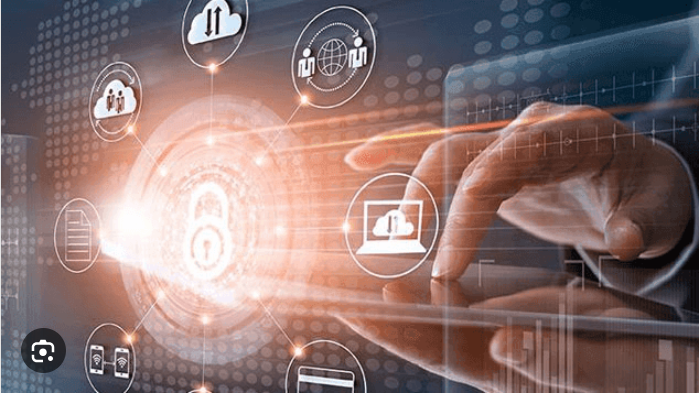What Is DLP? A Guide to DLP Tools and Best Data Loss Prevention Reviews

What Is DLP? A Guide to DLP Tools and Best Data Loss Prevention Reviews
In the age of digital work, data is one of the most valuable assets a business owns. The risk of a cyber attack, an insider threat, or compliance requirements to protect sensitive data makes Data Loss Prevention Software (known as DLP software for short) a necessity for all organizations. This article will help define what is DLP, look at dlp tools, and give an overview of some of the best data loss prevention reviews.
What Is Data Loss Prevention Software?
Data Loss Prevention Software (DLP software) is security software built to secure sensitive business data from unauthorized access or from unauthorized sharing of business data or data leaking. DLP software actively monitors, detects, and prevents possible data breaches, whether accidental or intentional, for endpoints, networks, and cloud environments.
As companies grow towards more fluid and common digital workspaces, and the increase of remote work continues, DLP software will be key to the protection of intellectual property, customer data, financial data, and other sensitive asset types. DLP software contributes to productivity, compliance, and cybersecurity posture.
Core Capabilities of DLP Software
Modern dlp tools come packed with intelligent monitoring features. Core capabilities include:
- Insider Threat Prevention: Thoroughly monitor and prevent data leaks that originate from employee or internal contractor access to sensitive data.
- User Behavior Alerts (UBA): Use AI-enhanced, data-laden – focused insights of behavior analytics to find anomalies in jobs, tasks, and processes.
- Continuous Data Monitoring: Monitor for data movement across all devices, networks, and applications in real time, continuously.
- Watching Employees: Ensure employees do not abuse data policies while furthering allowed data send, and data receive.
These features give IT teams, and security managers oversight, without interruption to user productivity.
Why is Data Loss Prevention Software Important?
When organizations add DLP software to their security portfolios, they gain a multitude of advantages:
- Internal Threat Prevention: DLP software is utilized to combat internal threats, which are sometimes a result of greed or carelessness.
- Greater Compliance: Assists an organization to comply with regulations like HIPAA, PCI-DSS, etc..
- Data Visibility: Provides organizations with more visibility into the actions of their data once it has been accessed, stored, and transmitted.
- Reduction of Risks: DLP software reduces the chance of data breaches that could cost organizations thousands of dollars, as well as protect their reputations.
The DLP product must be implemented to protect against employee error back to accidental file sharing while a disgruntled employee copies a list of your customers.
Compliance and Privacy
An issue that comes when an organization implements DLP software is privacy. Monitoring user behavior should be done compliant and in accordance with ethical guidelines. Luckily, most DLP software is made to maintain compliance with both data protection laws and privacy regulations.
Organizations can implement configurable rules or audit logs to provide evidence of their intent to protect their data, and accountability when subject to or a vendor request during an audit.
Industry Use Cases
DLP software is useful for a number of industries in tangible, real-world applications of protecting data. Here are some use cases for DLP software:
- Healthcare Use: Protecting patient data and compliance with the Health Insurance Portability and Accountability Act (HIPAA).
- Finance Use: Protecting financial frameworks and sensitive client data in compliance with the Payment Card Industry Data Security Standard (PCI-DSS).
- Educators: Protect student and faculty personal information from being leaked.
- Legal: Safeguard case-related documents, and maintain confidentiality of clients.
- Retail: Watch who can access customer loyalty information and payment information.
No matter what sector you’re in, data loss prevention software provides smarter and safer handling of data.
Choosing Data Loss Prevention Software
The right data loss prevention software relies on your business needs and there are some basics you should keep in mind while doing your research and due diligence:
- Scalability – Can you expand the software as your business expands?
- Integration – Does it play well with the IT stack you already operate? (e.g. email utilitzing DLP, cloud agreement, endpoint disposition)
- Usability – Is the admin able to understand and work with the software without a degree? How easy is it for the end user to use?
- Reporting Ability – Can the solution provide reports that are both detailed and actionable?
- Support & Updates – Is the vendor there when you need them proactively, and introducing new features?
Before jumping into spending the organization’s money, you can always check out the best data loss prevention reviews to help you compare a few vendors.
Implementing Data Loss Prevention Software
When it comes to implementation of data loss prevention software, you want better implementing options
Implementations will look unique based on your organization, but you can follow these best practices for all implementations.
- Audit Your Data – Determine what data should be protected.
- Policy – Develop policies to align with your business policies or align with your compliance acts.
- Train Employees – Report the expectations around data security and prevention.
- Start small – Implement data loss prevention software in workable stages, keeping the software contained for easy troubleshooting.
- Monitor and revise – Consider reporting policies and engage DLP, and make revisions as noted in the organization or with noted medical threats.
Engaging your behavioral workflow is the key to successful implementation of data loss prevention software.
Trends and Future of DLP
As cyber threats grow in sophistication, so do data loss prevention software (DLP) solutions. Here are a few innovations that will shape the DLP future:
- AI & Machine Learning Integration – Greater accuracy in detection and automated responses, faster.
- Cloud-Native DLP – With the growing hybrid and multi-cloud solutions, creating a DLP for such complex architecture will show itself as valuable.
- Zero Trust Architecture – Enforcing strict access controls, properly.
- Real-Time Analytics – Quick feedback on risky behaviors.
- Cross-Platform & Device DLP Support – Mobile, IoT, and remote workforce DLP.
Organizations that take advantage of the innovations that emerging technologies offer will better prepare, essentials to threat readiness, and equipped to respond to the demand of threat landscape.
Conclusion on DLP Software
Understanding your I what is dlp software and investing in DLP tools is fundamental to any business that values its data. Insights from the best data loss prevention software reviews will help organizations with selecting and/or implementing new software, securing sensitive information, compliance needs, as well as building customer trust.
DLP software is critical to creating a modern cybersecurity strategy to protect (and prevent from loss) client data in law firms or to ensure compliance in a healthcare system.




